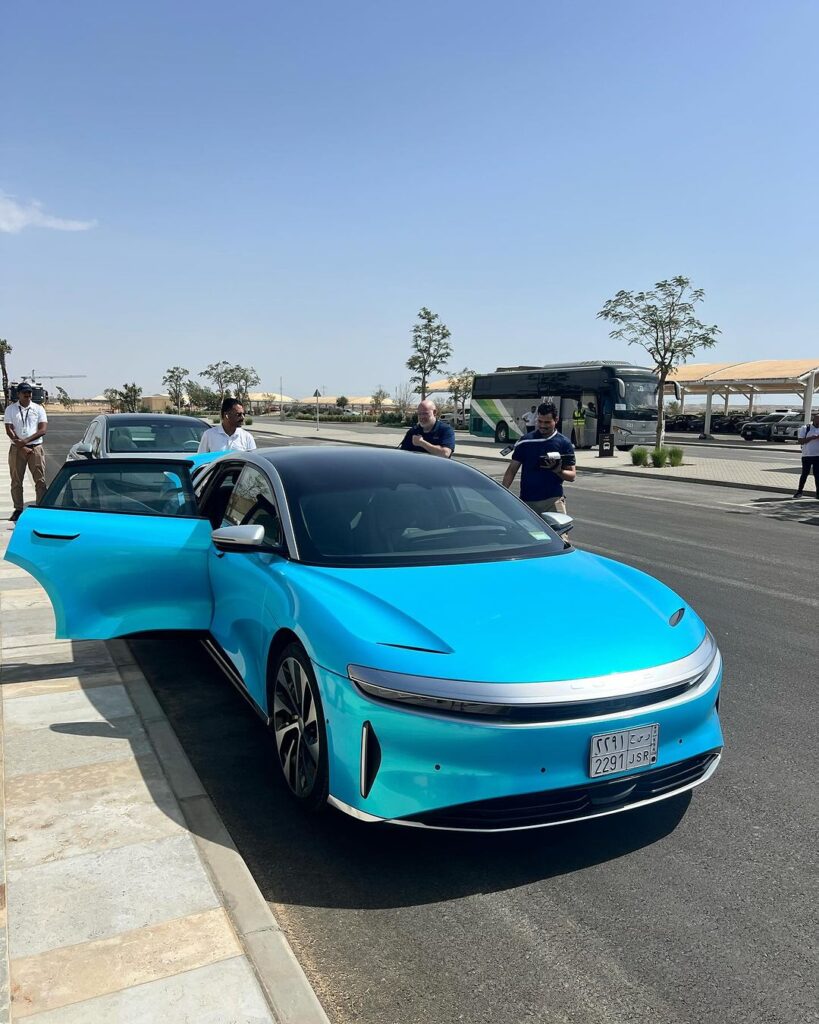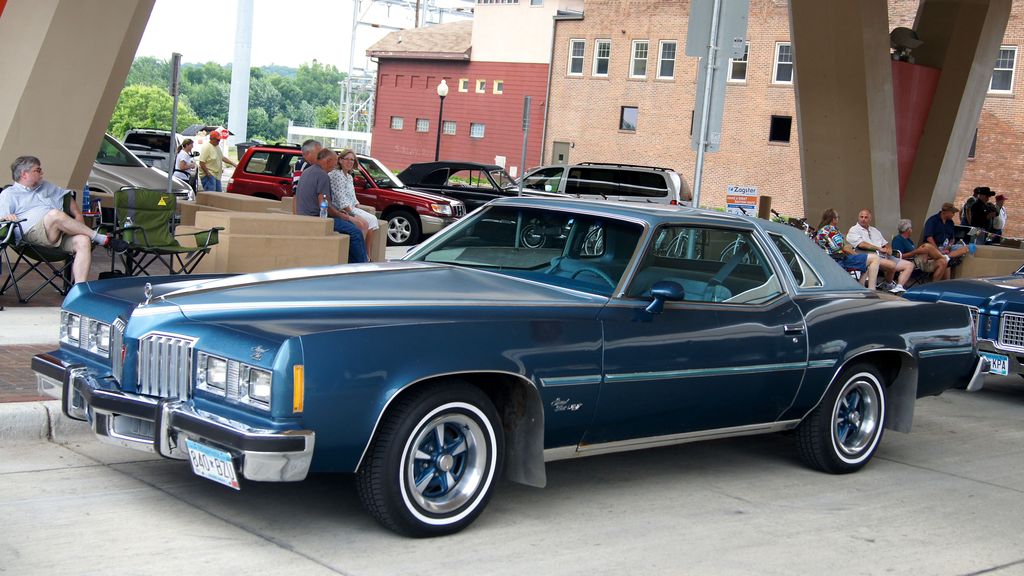
The 1970s, for many automotive enthusiasts, often conjure images of a period rife with challenges. These included looming emissions regulations, the specter of smog pumps, and the gradual decline of the raw, untamed horsepower that defined the preceding decade. It was an era of transformation, a stark departure from the high-octane glory days, where many iconic muscle cars found themselves trapped in a downward spiral of power cuts and engineering compromises. Yet, amidst this shifting landscape, a select few models not only survived but thrived, preserving the very essence of Detroit iron.
These remarkable machines, often born from limited production runs or under-the-radar trim packages, stand as a testament to the ingenuity and resilience of American manufacturers. They are the unsung heroes and the celebrated icons that kept the performance flame burning brightly, even when market forces and government mandates threatened to extinguish it forever. From fire-breathing big-blocks to subtly powerful designs, these automobiles encapsulate a fascinating chapter of automotive history.
In this deep dive, we spotlight 15 truly rare American cars from the 1970s, vehicles that refused to fade into obscurity. We’ll explore their formidable specifications, the innovations that set them apart, and the unique stories behind their enduring collector appeal. Join us as we uncover the last great roar of classic muscle, a testament to an era when American performance still had a fighting chance.
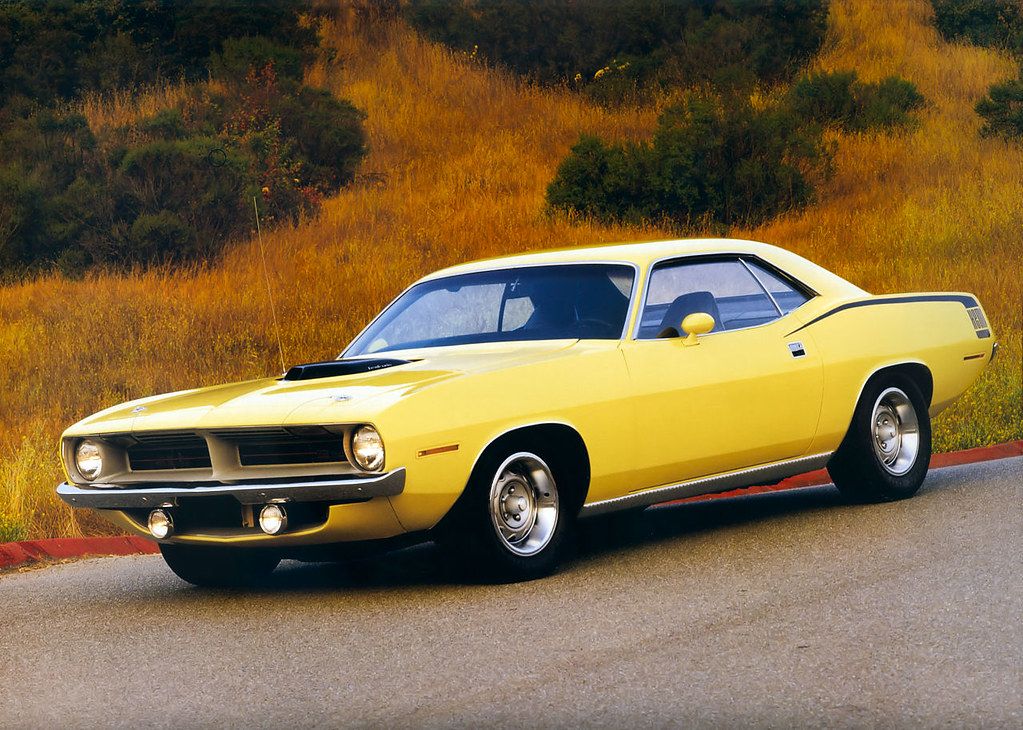
1. **1970 Plymouth Hemi ’Cuda**The Plymouth Barracuda had undergone a significant metamorphosis since its debut in 1964, but it was the arrival of the E-Body platform in 1970 that truly allowed Plymouth designers to sculpt a sleeker, more aggressively styled shape. At the pinnacle of its engine offerings was the legendary 426 Hemi, a powerplant widely celebrated for its distinctive hemispherical combustion chambers and its near-bulletproof rotating assembly. Even as increasing insurance premiums began to curb the popularity of big-engine vehicles, Plymouth steadfastly continued with this formidable, high-powered variant.
What truly elevates the 1970 Plymouth Hemi ’Cuda to legendary status is its profound rarity. Only a minuscule fraction of the total ’Cuda production was ever equipped with the Hemi engine, with examples featuring desirable options like the 4-speed manual transmission or the iconic “Shaker” hood scoop becoming even more elusive. Officially rated at a robust 425 horsepower, many experts believe the Hemi’s actual output was considerably higher, effortlessly propelling the car to impressive quarter-mile times in the low 13-second range.
Today, the collector appeal of these vehicles is immense. Given their low initial sales figures and the legendary engine residing under the hood, pristine, numbers-matching examples of the 1970 Plymouth Hemi ’Cuda consistently command six-figure prices at premier collector car auctions. On occasion, exceptionally preserved models can even push into the seven-figure territory, solidifying their position as one of the most coveted American muscle cars of all time.
Car Model Information: 2023 GMC Sierra 1500 Denali
Caption: 1970 Hardtop Coupe
Name: Plymouth Barracuda
Manufacturer: Plymouth (automobile)
Production: 1964–1974
Assembly: Fenton, Missouri,Hamtramck, Michigan,Maywood, California,Windsor, Ontario
Layout: Front-engine, rear-wheel drive layout
Class: Pony car
Categories: 1970s cars, All articles with dead external links, All articles with unsourced statements, Articles with dead external links from February 2018, Articles with dead external links from January 2022
Summary: The Plymouth Barracuda is a two-door pony car that was manufactured by Chrysler Corporation from 1964 through 1974 model years.
The first-generation Barracuda was based on the Chrysler A-body and was offered from 1964 until 1966. A two-door hardtop (no B-pillar) fastback design, it shared a great majority of parts and bodywork with the Plymouth Valiant, except for the distinctive wraparound rear glass.
The second-generation Barracuda, though still Valiant-based, was heavily redesigned. Built from 1967 through 1969, it was available as a two-door in fastback, notchback, and convertible versions.
The third generation, offered from 1970 until 1974, was based on the Chrysler E-body, exclusive to it, and the slightly larger Dodge Challenger. A completely new design, the two-door Barracuda was available in hardtop and convertible body styles.
Get more information about: Plymouth Barracuda
Buying a high-performing used car >>>
Brand: Plymouth Model: Hemi ’Cuda
Price: $61,999 Mileage: 17,877 mi.
Read more about: The 16 Most Iconic American Muscle Cars of the 60s & 70s
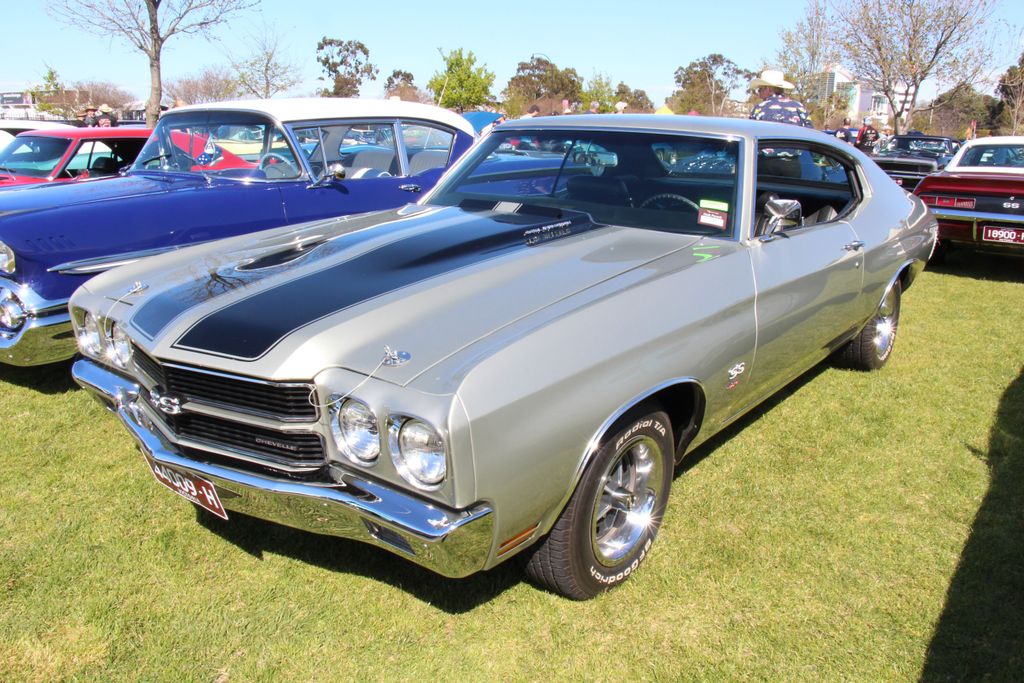
2. **1970 Chevrolet Chevelle SS 454 LS6**Often heralded as arguably the most potent Chevelle ever to roll off the production line, the 1970 SS 454 LS6 stands as an undisputed crowning achievement in Chevrolet’s muscle-era history. Following General Motors’ pivotal decision to loosen its corporate restrictions on engine displacement within intermediate cars, Chevy engineers wasted no time. They swiftly undertook the ambitious task of stuffing the colossal 454-cubic-inch V8 into the Chevelle’s engine bay, a monumental effort that culminated in the iconic LS6 package.
The key distinction of this particular Chevelle was, without a doubt, its LS6 engine. While officially advertised with an impressive 450 horsepower, a figure that was astonishing for its time, numerous enthusiasts and automotive experts widely estimate that the real-world output of this powerhouse hovered consistently between 470 and 500 horsepower. This immense power translated directly into formidable performance, allowing the LS6 Chevelle to achieve quarter-mile times in the high 12-second range with only minimal tuning – a truly phenomenal feat for a factory-produced vehicle at the very dawn of the 1970s.
The rarity factor of the 1970 Chevrolet Chevelle SS 454 LS6 is also a significant aspect of its allure. The LS6 package itself represented an expensive optional upgrade, a cost many prospective buyers at the time chose to forgo in favor of more economical alternatives. Consequently, authentic LS6 cars remain exceedingly scarce in the collector market today, a scarcity that has undeniably cemented their status as a top-tier, highly desirable muscle car collectible, revered by enthusiasts for its raw power and dominant street presence.
Car Model Information: 1969 Chevrolet Chevelle SS
Name: Chevrolet Chevelle
Caption: 1970 Chevrolet Chevelle SS 396 Sport Coupe
Manufacturer: Chevrolet
Production: 1963–1977
ModelYears: 1964–1977
Class: Mid-size
Platform: GM A platform (RWD)
Layout: FR layout
Successor: Chevrolet Malibu
Categories: 1970s cars, All articles needing additional references, All articles that may contain original research, All articles with specifically marked weasel-worded phrases, All articles with unsourced statements
Summary: The Chevrolet Chevelle is a mid-sized automobile that was produced by the Chevrolet division of General Motors (GM) in three generations for the 1964 to 1977 model years. Part of the GM A-body platform, the Chevelle was one of Chevrolet’s most successful nameplates. Body styles included coupes, sedans, convertibles, and station wagons. The “Super Sport” versions were produced through the 1973 model year and Lagunas from 1973 through to 1976.
After a four-year absence, the El Camino was reintroduced as part of the new Chevelle lineup in 1964.
From 1964 to 1969, GM of Canada sold a modified version of the Chevelle that included a Pontiac-style grille, and a LeMans instrument panel, marketed as the Beaumont.
The Malibu was the top-of-the-line model to 1972, and completely replaced the Chevelle nameplate starting with the redesigned, and downsized 1978 model year.
Get more information about: Chevrolet Chevelle
Buying a high-performing used car >>>
Brand: Chevrolet Model: Chevelle
Price: $119,550 Mileage: 93 mi.
Read more about: Untamed Beasts: The Most Outrageously Overpowered Muscle Cars That Pushed Street Limits
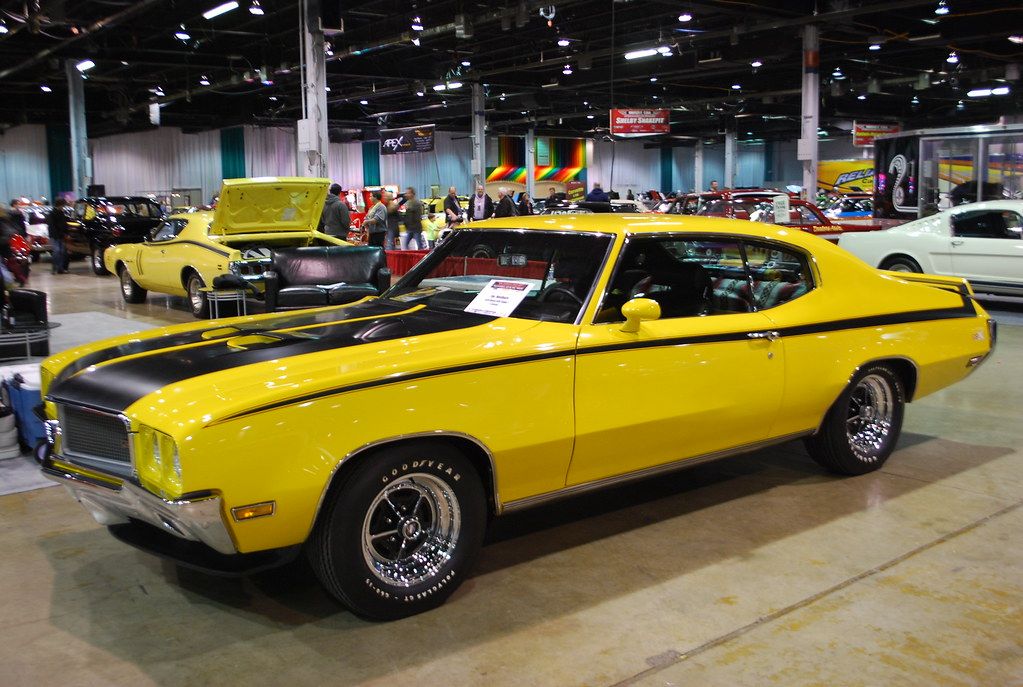
3. **1970 Buick GSX Stage 1**Buick’s Gran Sport (GS) line had already established a reputation for delivering surprising performance, especially for a division traditionally known more for its luxurious offerings. However, in 1970, Buick engineers pushed the boundaries even further, elevating the already potent 455-cubic-inch V8 engine to unprecedented heights with the introduction of the Stage 1 option. This enhanced powertrain was then meticulously integrated into the visually striking GSX appearance package, a combination replete with vibrant colors, unmistakable racing stripes, and a prominent rear spoiler.
What truly set the 1970 Buick GSX Stage 1 apart was its powerhouse engine. While officially rated at 360 horsepower, the more astonishing figure was its stump-pulling 510 lb-ft of torque. This torque rating arguably positioned the Stage 1 among the most potent of the entire big-block muscle car breed, offering an immediate and visceral surge of power that few could match. Initial GSX models were also offered in a strikingly limited palette of just two hues: the eye-catching Saturn Yellow or the crisp Apollo White, a bold visual identity that instantly made them standouts at any local cruise-in or car gathering.
Despite having relatively low production numbers – though somewhat higher than some of its more exclusive Mopar equivalents – the 1970 Buick GSX Stage 1 in excellent condition can still command a significant premium in today’s collector market. Its unique blend of Buick’s inherent refinement and the raw, untamed muscle performance firmly sets it apart from its contemporaries, making it a highly desirable piece of automotive history for those who appreciate both luxury and blistering speed.
Read more about: Untamed Beasts: The Most Outrageously Overpowered Muscle Cars That Pushed Street Limits

4. **1970 AMC Rebel Machine**For much of its history, American Motors Corporation (AMC) often operated somewhat under the radar, frequently overshadowed by the larger and more dominant forces of Ford, Chevrolet, and Chrysler. However, the 1970 Rebel Machine boldly defied these expectations, presenting a factory-tuned muscle sedan that was specifically aimed at budget-conscious enthusiasts who still craved genuine performance. Launched with a flamboyant red-white-blue paint scheme, though optional subtler hues were also available, it represented a direct and assertive salvo fired squarely into the competitive muscle car market.
Several standout elements contributed to the Rebel Machine’s unique appeal. Under the hood, a potent 390 V8 engine was cranking out approximately 340 horsepower, a power output that was more than sufficient to propel the Rebel Machine into the respectable 14-second quarter-mile bracket. This was an impressive performance figure, particularly for a vehicle from what was often considered an underdog brand in the fiercely competitive American automotive landscape.
Its low production numbers further boosted its modern rarity factor. AMC’s comparatively smaller dealership network naturally resulted in fewer units being sold initially, which in turn has made the Rebel Machine a truly scarce sight today. Despite its overshadowed sales figures, those in the know, the true connoisseurs of muscle, hold the Rebel Machine in high regard, respecting its remarkably balanced performance capabilities and its undeniably rebellious and distinctive styling that set it apart from the crowd.
Car Model Information: 2023 GMC Sierra 1500 Denali
Caption: 1968 AMC Rebel 770 station wagon
Name: AMC Rebel
Aka: Australia,Mexico,Europe
Manufacturer: American Motors Corporation
Production: 1967–1970 (US market)
ModelYears: 1967–1970 (US market)
Assembly: Australia
Class: Mid-size car
BodyStyle: sedan (car),convertible,hardtop,4-door sedan,station wagon
Engine: 232 CID
Abbr: on approx.
Transmission: Manual transmission,Overdrive (mechanics),4-speed manual floor or console,Automatic transmission,3-speed “Shift-Command” on console
Layout: Front-engine, rear-wheel drive layout
Wheelbase: 114 in
Length: {{convert,197,in,mm,0,abbr=on
Width: 77.29 in
Height: 53.5 in
Weight: 3500 lb
Platform: AMC’s “senior cars”
Predecessor: Rambler Classic
Successor: AMC Matador
Related: AMC Ambassador
Categories: 1970s cars, AMC vehicles, All articles with dead external links, Articles with dead external links from July 2023, Articles with permanently dead external links
Summary: The AMC Rebel (known as the Rambler Rebel in 1967) is a midsized car produced by American Motors Corporation (AMC) from the 1967 until the 1970 model year. It replaced the Rambler Classic. A similar AMC Matador line replaced the Rebel models, starting with the 1971 model year.
The Rebel was positioned as the high-volume seller in the independent automaker’s line of models. The Rebel was also available in several specialty models, including station wagons featuring themed trim and luxury equipment offered only in selected geographical regions. A high-performance, low-priced muscle car version was produced in 1970, the Machine, which is most recognized in its flamboyant white, red, and blue trim.
The Rebel is the shorter-wheelbase, intermediate-sized version of the longer-wheelbase, full-sized Ambassador line.
The Rebel was built at AMC’s West Assembly Line (along with the Ambassador) in Kenosha, Wisconsin, and in Brampton, Ontario, Canada (Bramalea – Brampton Assembly Plant).
The Rebel was also assembled from Complete Knock-down (CKD) kits under license in Europe (by Renault in 1967), in Mexico (by Vehiculos Automotores Mexicanos), in Costa Rica by Purdy Motor; and from Semi Knockdown kits (SKD) in Australia (by Australian Motor Industries), and in New Zealand (by Campbell Motor Industries). Although the Rambler name was discontinued on the Rebel in the U.S. and Canadian markets after the 1967 model year, the cars continued to be sold in international markets under the historic “Rambler” brand.
Get more information about: AMC Rebel
Buying a high-performing used car >>>
Brand: AMC Model: Rebel Machine
Price: $61,999 Mileage: 17,877 mi.
Read more about: From Roaring V8s to Silent Thunder: The Electrifying Evolution of American Muscle Cars
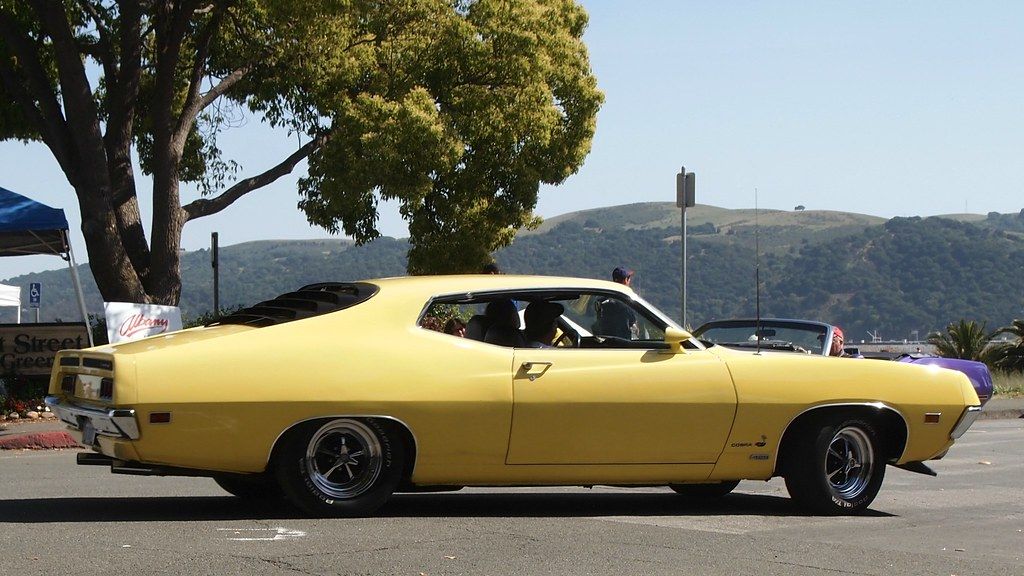
5. **1970 Ford Torino Cobra 429**While Ford’s iconic Mustang frequently commanded the lion’s share of the automotive spotlight, the 1970 Torino offered a compelling alternative, providing significantly more interior room and, in its aggressive Cobra trim, a truly serious level of firepower courtesy of the massive 429 cubic inch V8. Positioned and marketed as a larger, bolder muscle car, the Torino Cobra represented Ford’s strategic attempt to satisfy a particular segment of enthusiasts – those who desired a mid-size vehicle capable of delivering blistering straight-line speed without compromising on interior space.
The specifications of the 1970 Ford Torino Cobra 429 were undeniably impressive. It was available with either the 429 Cobra Jet or the even more formidable Super Cobra Jet engines, capable of generating a robust 370–375 horsepower. This substantial power output was more than enough to propel this comparatively hefty coupe into the mid-13-second quarter-mile range, firmly establishing its credentials as a serious performer. The Torino platform itself also enjoyed considerable success on high-speed NASCAR ovals, a factor that partly explains Ford’s commitment to incorporating aerodynamic enhancements into its design.
In terms of rarity, the 1970 Torino Cobra 429 is significantly more scarce than its Mustang counterparts. Far fewer units of the Torino Cobra were produced compared to the ubiquitous Ford Mustangs of the era. This limited production means that finding original, unmolested examples of the 1970 Ford Torino Cobra 429 today is an exceedingly difficult task, making it a highly prized and sought-after vehicle among discerning collectors who appreciate its unique blend of size, power, and historical racing influence.
Car Model Information: 1970 Ford Torino
Aka: Ford Fairlane (Venezuela)
Name: Ford Torino
Caption: 1970 Ford Torino Cobra SportsRoof
Manufacturer: Ford Motor Company
Production: 1968–1976
Class: Mid-size car,muscle car
Layout: FR layout
Related: Mercury Montego
Assembly: ubl
Predecessor: Ford Fairlane (Americas)
Successor: Ford LTD II
Categories: 1960s cars, 1970s cars, All Wikipedia articles written in American English, All articles with vague or ambiguous time, Articles with short description
Summary: The Ford Torino is an automobile that was produced by Ford for the North American market between 1968 and 1976. It was a competitor in the intermediate market segment and essentially a twin to the Mercury Montego line.
Just as the Ford LTD had been the upscale version of the Ford Galaxie, the Torino was initially an upscale variation of the intermediate-sized Ford Fairlane. In the 1968 and 1969 model years, the intermediate Ford line consisted of lower-trim Fairlanes and its subseries, the upper-trim Torino models. In 1970, Torino became the primary name for Ford’s intermediate, and the Fairlane was now a subseries of the Torino. In 1971, the Fairlane name was dropped altogether, and all Ford intermediates were called Torino.
Most Torinos were conventional cars, and generally the most popular models were the four-door sedans and two-door hardtops. However, Ford produced some high-performance “muscle car” versions of the Torino by fitting them with large powerful engines, such as the 428 cu in (7.0 L) and 429 cu in (7.0 L) “Cobra-Jet” engines. Ford also chose the Torino as the base for its NASCAR entrants, and it has a successful racing heritage.
Get more information about: Ford Torino
Buying a high-performing used car >>>
Brand: Ford Model: Torino
Price: $49,000 Mileage: 33,326 mi.
Read more about: The Cars That Became Stars: 12 Iconic Vehicles from 70s & 80s TV & Film

6. **1970 Dodge Challenger R/T**The 1970 Dodge Challenger R/T stands as a true icon of American muscle, renowned for being a pivotal part of the legendary Scat Pack lineup. This formidable machine offered a range of powerful engine options, most notably the robust 440 Magnum V8, with the even more desirable and immensely powerful Hemi engine available as an optional upgrade. Its muscular appearance, characterized by aggressive lines and a commanding presence, perfectly complemented its exceptional performance capabilities, making it an immediate standout in the fiercely competitive muscle car segment.
The influence of the 1970 Dodge Challenger R/T continues to reverberate throughout the automotive world, particularly evident in the design and spirit of modern muscle cars. Today’s iteration of the Challenger, a vehicle that has captured the imagination of a new generation of enthusiasts, serves as a direct homage to its storied roots, drawing heavily on the classic design cues and performance ethos of its 1970 predecessor. This enduring connection highlights the timeless appeal and profound impact of the original R/T model.
While relatively few original 1970 Dodge Challenger R/T models have survived in pristine condition over the decades, their legacy remains vibrantly alive and well in the hearts of car lovers. The car’s remarkable blend of iconic style and raw, unadulterated power continues to resonate deeply with enthusiasts. This sustained admiration ensures its revered status in automotive history, solidifying its place as a quintessential American muscle car that continues to inspire awe and excitement.
Car Model Information: 2022 Dodge Challenger R/T
Name: Dodge Challenger
Production: 1969–1974,1977–1983,2008–2023
ModelYears: 1970–1974,1978–1983,2008–2023
Caption: 2015 Dodge Challenger SRT Hellcat
Manufacturer: Dodge
Categories: 1970s cars, 1980s cars, 2000s cars, 2010s cars, 2020s cars
Summary: The Dodge Challenger is the name of three generations of automobiles produced by the American automobile manufacturer Dodge. However, the first use of the Challenger name by Dodge dates back to 1959 for marketing a “value version” of the full-sized Coronet Silver Challenger.
From model years 1970 to 1974, the first-generation Dodge Challenger pony car was built using the Chrysler E platform in hardtop and convertible body styles sharing significant components with the Plymouth Barracuda.
The second generation, from model years 1978 to 1983, was a rebadged Mitsubishi Galant Lambda / Sapporo, a coupe version of an economical compact car.
The third and current generation is a full-size muscle car that was introduced in early 2008 initially as a rival to the evolved fifth generation Ford Mustang and the fifth generation Chevrolet Camaro.
In November 2021, Stellantis announced that the 2023 model year would be the final model year for both the LD Dodge Charger and LA Dodge Challenger, as the company will focus its plans on electric vehicles rather than fossil fuel-powered vehicles, due to tougher emissions standards required by the Environmental Protection Agency for the 2023 model year. Challenger production ended on December 22, 2023, and the Brampton, Ontario, assembly plant will be re-tooled to assemble an electrified successor.
Get more information about: Dodge Challenger
Buying a high-performing used car >>>
Brand: Dodge Model: Challenger
Price: $35,880 Mileage: 34,654 mi.
Read more about: From Roaring V8s to Silent Thunder: The Electrifying Evolution of American Muscle Cars
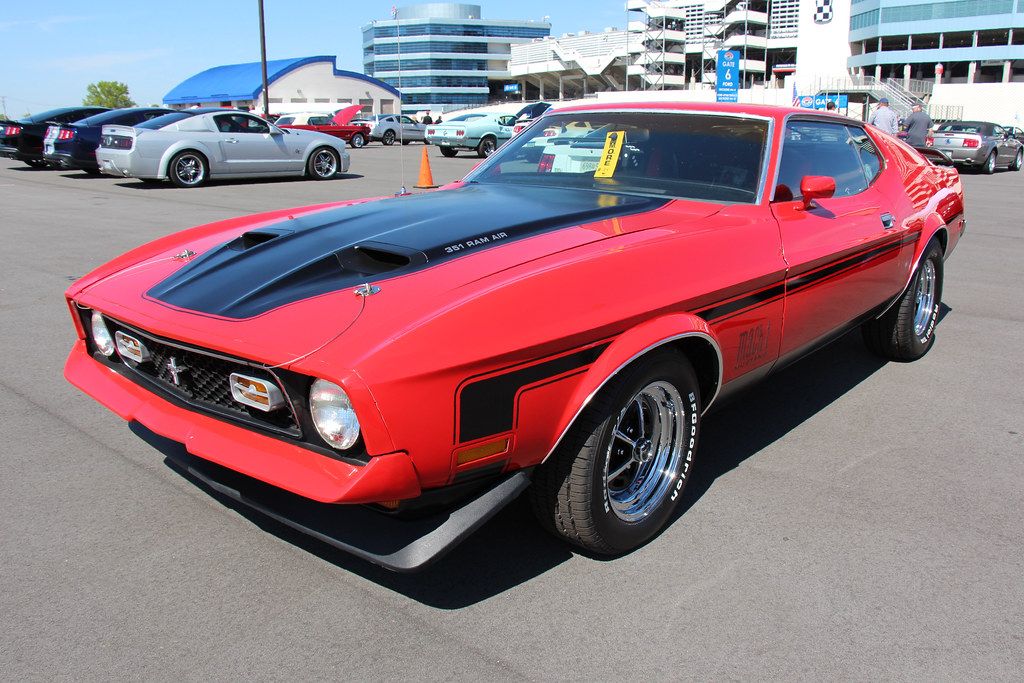
7. **1971 Ford Mustang Mach 1**The 1971 Ford Mustang Mach 1 holds a distinct and significant position in the annals of Mustang history as the last of the truly big-block Mustangs. This potent variant was typically equipped with the formidable Cobra Jet 429 engine, a powerplant that delivered immense performance befitting its aggressive appearance. Its striking fastback design, characterized by sweeping lines and a bold, purposeful look, instantly solidified its status as an icon of the era, perfectly embodying the spirit of American muscle and style.
The Mach 1 was never merely about its captivating aesthetics; its performance capabilities were meticulously engineered to match its visually striking appearance. With the power of the Cobra Jet 429, the car was capable of delivering exhilarating acceleration and impressive top-end speed, making it a formidable presence on both the street and the strip. This harmonious blend of form and function ensured that the Mach 1 was a true driver’s car, highly regarded for its dynamic prowess.
Despite its considerable impact, the production numbers for the 1971 Ford Mustang Mach 1 were comparatively limited, contributing to its current rarity and desirability. Nevertheless, the Mach 1 remains an immensely beloved model among dedicated Ford enthusiasts and collectors worldwide. Its distinctive design and the engineering innovations it showcased have left an indelible and lasting impact on the Mustang lineage, profoundly influencing subsequent generations of the legendary pony car and cementing its place as a timeless classic.
Continuing our journey through the remaining distinctive American vehicles of the 1970s, we reveal their enduring legacies, exceptional rarity, and how they adapted, or defiantly rebelled, against a decade of profound transformation. Each of these machines tells a unique story of ingenuity, perseverance, and the unyielding spirit of American performance, cementing their place in the hearts of enthusiasts and the annals of automotive history.
Car Model Information: 1966 Ford Mustang Base
Name: Ford Mustang
Caption: 2018 Ford Mustang GT 5.0
Aka: Ford T5 (Germany)
Manufacturer: Ford Motor Company
Production: March 1964 – present
ModelYears: 1965–present
Class: Unbulleted list
BodyStyle: Unbulleted list
Layout: Front-engine, rear-wheel-drive layout
Categories: 1970s cars, 1980s cars, 1990s cars, 2+2 coupés, 2000s cars
Summary: The Ford Mustang is a series of American automobiles manufactured by Ford. In continuous production since 1964, the Mustang is currently the longest-produced Ford car nameplate. Currently in its seventh generation, it is the fifth-best selling Ford car nameplate. The namesake of the “pony car” automobile segment, the Mustang was developed as a highly styled line of sporty coupes and convertibles derived from existing model lines, initially distinguished by “long hood, short deck” proportions.
Originally predicted to sell 100,000 vehicles yearly, the 1965 Mustang became the most successful vehicle launch since the 1927 Model A. Introduced on April 17, 1964 (16 days after the Plymouth Barracuda), over 400,000 units were sold in its first year; the one-millionth Mustang was sold within two years of its launch. In August 2018, Ford produced the 10-millionth Mustang; matching the first 1965 Mustang, the vehicle was a 2019 Wimbledon White convertible with a V8 engine.
The success of the Mustang launch led to multiple competitors from other American manufacturers, including the Chevrolet Camaro and Pontiac Firebird (1967), AMC Javelin (1968), and Dodge Challenger (1970). It also competed with the Plymouth Barracuda, which was launched around the same time. The Mustang also had an effect on designs of coupes worldwide, leading to the marketing of the Toyota Celica and Ford Capri in the United States (the latter, by Lincoln-Mercury). The Mercury Cougar was launched in 1967 as a unique-bodied higher-trim alternative to the Mustang; during the 1970s, it included more features and was marketed as a personal luxury car.
From 1965 until 2004, the Mustang shared chassis commonality with other Ford model lines, staying rear-wheel-drive throughout its production. From 1965 to 1973, the Mustang was derived from the 1960 Ford Falcon compact. From 1974 until 1978, the Mustang (denoted Mustang II) was a longer-wheelbase version of the Ford Pinto. From 1979 until 2004, the Mustang shared its Fox platform chassis with 14 other Ford vehicles (becoming the final one to use the Fox architecture). Since 2005, Ford has produced two generations of the Mustang, each using a distinct platform unique to the model line.
Through its production, multiple nameplates have been associated with the Ford Mustang series, including GT, Mach 1, Boss 302/429, Cobra (separate from Shelby Cobra), and Bullitt, along with “5.0” fender badging (denoting 4.9 L OHV or 5.0 L DOHC V8 engines).
Get more information about: Ford Mustang
Buying a high-performing used car >>>
Brand: Ford Model: Mustang
Price: $32,991 Mileage: 98,810 mi.
Read more about: 10 Rare British Cars: Unearthing Icons of Innovation and Engineering Excellence
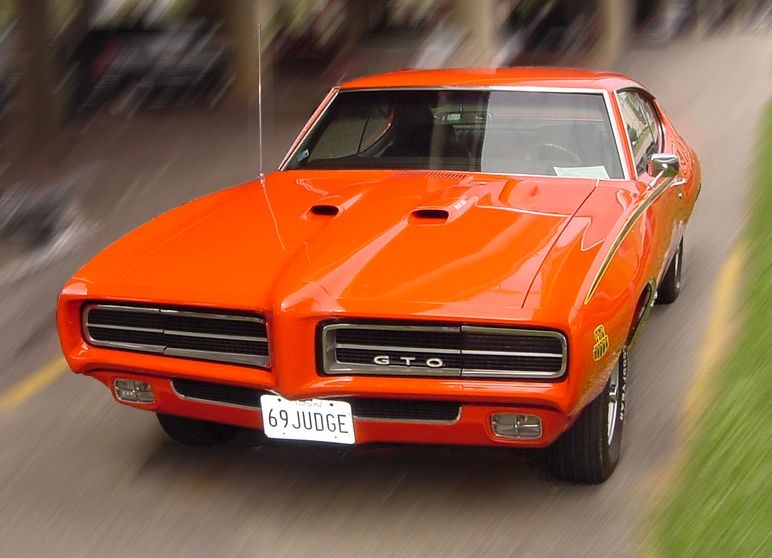
8. **1971 Pontiac GTO Judge**By 1971, the flamboyant “The Judge” package, which had burst onto the scene in 1969 with its vibrant paint, distinctive spoiler, and famously whimsical name, was already winding down. Pontiac had originally conceived “The Judge” as a spirited and somewhat lighthearted response to the intensifying competition in the muscle car arena. However, by this point, new corporate directives from General Motors, coupled with a rapidly shifting market that increasingly favored more economical and less ostentatious vehicles, drastically curtailed its production numbers for the final model year.
Despite the prevailing winds of change, the heart of the 1971 GTO Judge still beat with formidable power. Under its hood lay the venerable 455-cubic-inch V8 engine, often specifically labeled as the “High Output” or HO variant. This powerplant continued to deliver impressively healthy torque figures, even as early emissions restrictions began to take their toll on the raw horsepower ratings of many contemporaries. The engineering efforts aimed to maintain the GTO’s performance pedigree while navigating a challenging regulatory environment.
The dwindling production numbers for the 1971 model year are what truly elevate this particular GTO Judge to the realm of a collector’s gem. Only a few hundred Judges rolled off the assembly line before the highly popular and iconic option package was officially retired, making it an exceedingly rare sight today. Consequently, well-documented examples of these late-production GTO Judges consistently command significantly elevated prices in the collector car market, solidifying their status as one of the rarest and most desirable pieces of Pontiac’s storied muscle repertoire.
Car Model Information: 2023 GMC Sierra 1500 Denali
Name: Pontiac GTO
Caption: 2005 Pontiac GTO
Manufacturer: Pontiac (automobile),Holden
Class: Mid-size car,Compact car,Mid-size car
Production: 1963–1974,2003–2006
Predecessor: Pontiac Tempest
Layout: Front-engine, rear-wheel-drive layout
Categories: 1970s cars, 2000s cars, All articles with unsourced statements, Articles with short description, Articles with unsourced statements from October 2008
Summary: The Pontiac GTO is a front-engine, rear-drive, two-door, and four-passenger automobile manufactured and marketed by the Pontiac division of General Motors over four generations from 1963 until 1974 in the United States — with a fifth generation made by GM’s Australian subsidiary, Holden, for the 2004 through 2006 model years.
The first generation of the GTO is credited with popularizing the muscle car market segment in the 1960s. Some consider the Pontiac GTO to have started the trend with all four domestic automakers offering a variety of competing models.
For the 1964 and 1965 model years, the GTO was an optional package on the intermediate-sized Pontiac LeMans. The 1964 GTO vehicle identification number (VIN) started with 22, while the 1965 GTO VIN began with 237. The GTO was designated as a separate Pontiac model from 1966 through 1971 (VIN 242…). It became an optional package again for the 1972 and 1973 intermediate LeMans. For 1974, the GTO was an optional trim package on the compact-sized Ventura.
The GTO model was revived for the 2004 through 2006 model years as a captive import for Pontiac, a left-hand drive version of the Holden Monaro, itself a coupé variant of the Holden Commodore.
Get more information about: Pontiac GTO
Buying a high-performing used car >>>
Brand: Pontiac Model: GTO Judge
Price: $61,999 Mileage: 17,877 mi.
Read more about: Untamed Beasts: The Most Outrageously Overpowered Muscle Cars That Pushed Street Limits
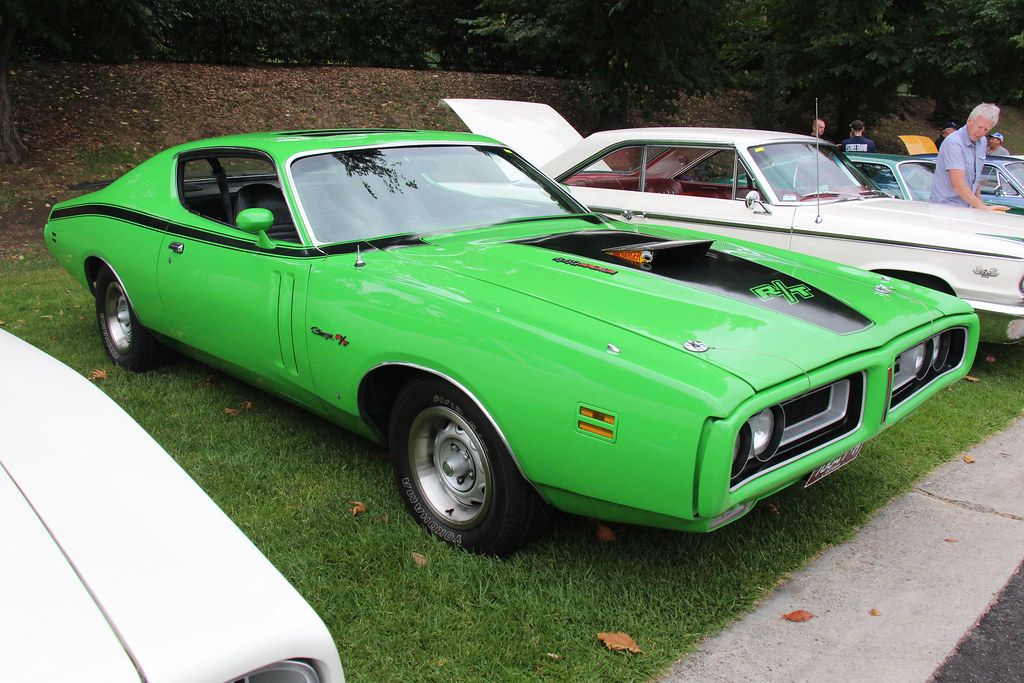
9. **1971 Dodge Charger R/T 440 Six Pack**The legendary Six Pack carburetor setup, characterized by its trio of two-barrel carburetors, had firmly established itself as a revered hallmark of Mopar performance on iconic vehicles like the Road Runner and Super Bee. However, by 1971, the automotive landscape was rapidly changing, with mounting federal regulations aimed at emissions reduction and the specter of an impending fuel crisis. These challenges immediately threatened the viability of such high-performance, multi-carburetor configurations, rendering the Charger R/T 440 Six Pack an endangered species almost from the moment of its inception.
At its core, the 1971 Dodge Charger R/T 440 Six Pack was defined by its immense multi-carb power. While officially rated at approximately 385 horsepower, its true prowess was widely recognized to be in its monstrous mid-range torque, which delivered an immediate and brutal surge of acceleration. Visually, the ’71 Charger introduced a striking new aesthetic, notably featuring a distinctive loop bumper and hidden headlights on certain trims, which collectively gave the car an undeniable and aggressive road presence that set it apart from its predecessors.
The period immediately following 1971 saw a drastic slowdown in the production of these powerful machines, largely attributable to escalating insurance costs and the ever-tightening grip of emissions regulations. This rapid decline in availability has undeniably cemented the 1971 Dodge Charger R/T 440 Six Pack’s status as a profoundly rare Mopar collectible, making it a highly coveted piece of automotive history for enthusiasts who appreciate its unique blend of formidable power and audacious styling.
Car Model Information: 2022 Dodge Charger SRT Hellcat Widebody
Name: Dodge Charger
Caption: 1969 Dodge Charger
Manufacturer: Dodge
Production: 1966–1978,1981–1987,2005–present
ModelYears: 1966–1978,1982–1987,2006–present
Categories: 1960s cars, 1970s cars, 1980s cars, 2000s cars, 2010s cars
Summary: The Dodge Charger is a model of automobile marketed by Dodge in various forms over eight generations since 1966.
The first Charger was a show car in 1964. A 1965 Charger II concept car resembled the 1966 production version.
In the United States, the Charger nameplate has been used on mid-size cars, personal luxury coupes, subcompact hatchbacks, and full-size sedans.
Get more information about: Dodge Charger
Buying a high-performing used car >>>
Brand: Dodge Model: Charger
Price: $82,991 Mileage: 1,802 mi.
Read more about: Unpacking the Paradox of Automotive Duplicates: Are Clones and Tributes the Future of Classic Car Ownership?
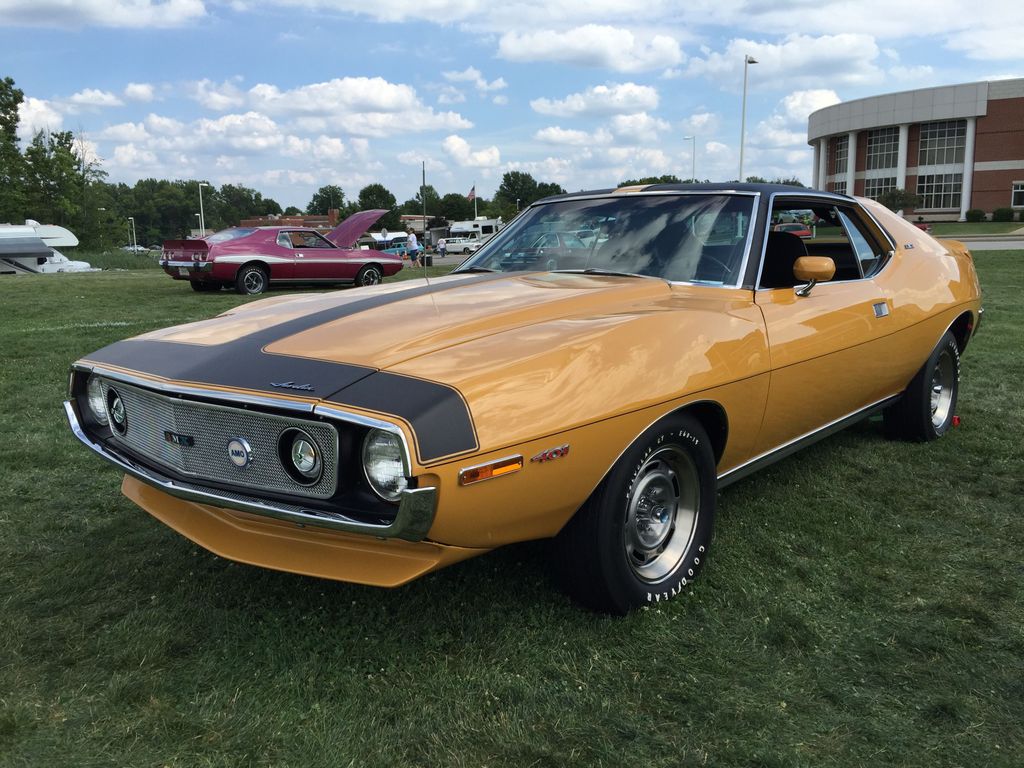
10. **1971 AMC Javelin AMX 401**American Motors Corporation (AMC), often perceived as an underdog among the domestic automotive giants, boldly carried the Javelin nameplate into 1971 with a completely redesigned body. This strategic move was undertaken with a clear objective: to significantly bolster AMC’s competitive credentials within the fiercely contested Trans-Am racing series. At the pinnacle of the Javelin lineup was the top-tier AMX model, and when meticulously equipped with the potent 401 cubic inch V8 engine, it possessed the raw power and agile dynamics to genuinely hold its own against many of the heavier-hitting, more established rivals from Detroit’s Big Three.
Several intriguing details contributed to the 1971 Javelin AMX 401’s unique character and performance profile. The heart of this machine was its formidable 401 cubic inch V8, which was typically advertised with a gross horsepower rating of around 330, though net ratings saw a slight dip due to the introduction of new, more stringent measuring standards. A visually striking feature that underscored its racing pedigree was the adoption of dramatically flared fenders, a design element borrowed directly from Trans-Am race cars, which bestowed upon the Javelin AMX a visibly more purposeful and aggressive stance.
Due to AMC’s comparatively smaller market share and dealership network, significantly fewer units of the 1971 Javelin AMX 401 were built compared to its mainstream competitors. This inherent scarcity has, over time, transformed it into something of a unicorn among pony car fans and collectors. Despite its niche appeal in its original era, the 1971 Javelin AMX 401 is now highly revered for its distinctive styling, robust performance, and its unique place in the history of American Motors.
Car Model Information: 2023 GMC Sierra 1500 Denali
Name: AMC Javelin
Caption: 1971 AMC Javelin SST
Manufacturer: American Motors Corporation
Aka: unbulleted list
Production: 1967–1974
ModelYears: 1968–1974
Assembly: unbulleted list
Designer: Dick Teague
Class: unbulleted list
BodyStyle: hardtop
Layout: Front-engine, rear-wheel drive layout
Platform: AMC’s “junior” cars
Predecessor: Rambler Marlin
Categories: 1970s cars, AMC vehicles, All articles that may contain original research, All articles with dead external links, All articles with unsourced statements
Summary: The AMC Javelin is an American front-engine, rear-wheel-drive, two-door hardtop automobile manufactured by American Motors Corporation (AMC) across two generations, 1968 through 1970 and 1971 through 1974 model years. The car was positioned and marketed in the pony car market segment.
Styled by Dick Teague, the Javelin was available in a range of trim and engine levels, from economical pony car to muscle car variants. In addition to manufacture in Kenosha, Wisconsin, Javelins were assembled under license in Germany, Mexico, Philippines, Venezuela, as well as Australia – and were marketed globally. American Motors also offered discounts to U.S. military personnel, and cars were taken overseas.
The Javelin won the Trans-Am race series in 1971, 1972, and 1976. The second-generation AMX variant was the first pony car used as a standard vehicle for highway police car duties by an American law enforcement agency.
Get more information about: AMC Javelin
Buying a high-performing used car >>>
Brand: AMC Model: Javelin AMX
Price: $61,999 Mileage: 17,877 mi.
Read more about: 20 Iconic Cars That Defined the Boomer Generation
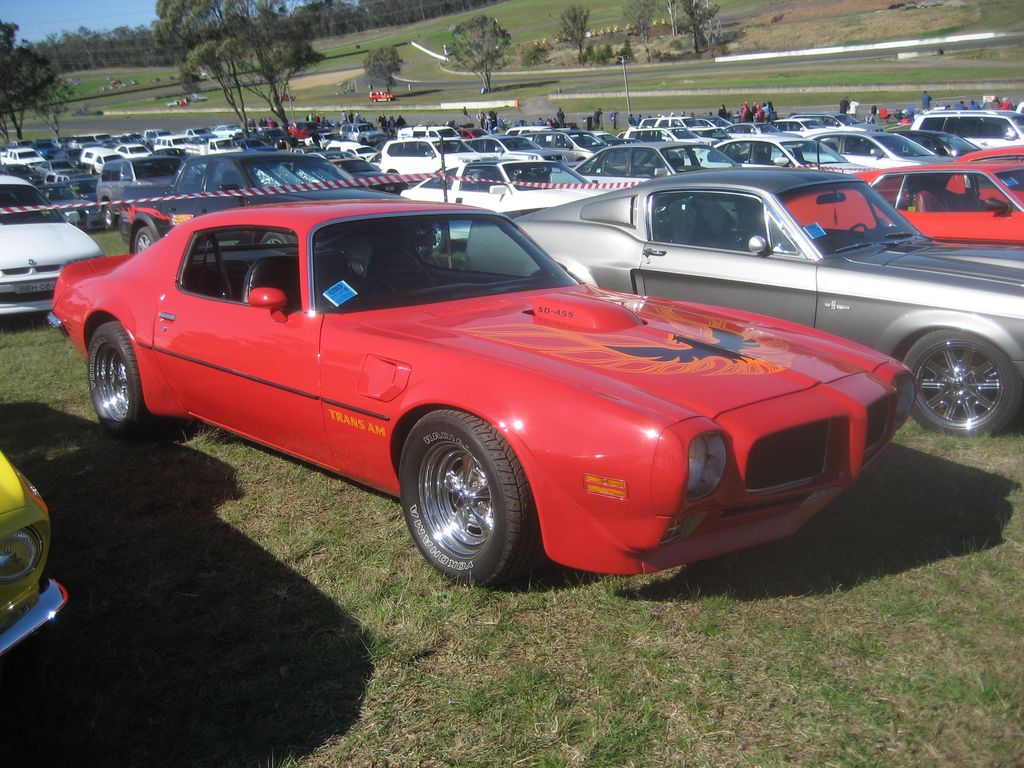
11. **1973 Pontiac Firebird Trans Am SD-455**The 1973 Pontiac Firebird Trans Am SD-455 stands as a testament to defiance amidst the industry-wide decline of horsepower. Despite the tightening grip of emissions regulations and a general softening of performance across the board, Pontiac courageously unleashed one of the strongest and most resilient engines of the early 1970s in the form of the Super Duty 455. This was no ordinary powerplant; it was a heavily fortified and meticulously engineered unit that astonishingly defied the low-compression, emissions-era expectations, albeit in exceptionally limited production runs.
What truly set the SD-455 engine apart was its internal construction and meticulous engineering. This powerhouse boasted robust forged internals, specially designed cylinder heads optimized for enhanced flow, and an increased nickel content within the block for superior durability under extreme stress. While its net horsepower ratings officially hovered around 290, real-world dyno tests and performance evaluations consistently suggested that its actual output was considerably higher, delivering a visceral driving experience that belied its published figures.
The rarity of the 1973 Pontiac Firebird Trans Am SD-455 is undisputed, with fewer than 300 units reportedly produced in that pivotal year. This extreme scarcity ensures that a well-documented and authentic SD-455 Trans Am is among the most coveted catches for discerning collectors at premier automotive auctions. It symbolizes Pontiac’s final, powerful stand against the forces that sought to extinguish raw muscle, making it a highly prized artifact of a bygone era in American performance.
Car Model Information: 2023 GMC Sierra 1500 Denali
Name: Pontiac Firebird
Caption: The second, third, and fourth generations of,the Pontiac Firebird Trans Am
Manufacturer: Pontiac (automobile)
Production: February 23, 1967 – August 30, 2002
ModelYears: 1967 – 2002
Class: Pony car,Muscle car
Platform: GM F platform
Related: Chevrolet Camaro
Layout: Front engine, rear-wheel-drive layout
Categories: 1970s cars, 1980s cars, 1990s cars, 2000s cars, All articles with dead external links
Summary: The Pontiac Firebird is an American automobile built and produced by Pontiac from the 1967 to 2002 model years. Designed as a pony car to compete with the Ford Mustang, it was introduced on February 23, 1967, five months after GM’s Chevrolet division’s platform-sharing Camaro. This also coincided with the release of the 1967 Mercury Cougar, Ford’s upscale, platform-sharing version of the Mustang.
The name “Firebird” was also previously used by GM for the General Motors Firebird series of concept cars in the 1950s.
Get more information about: Pontiac Firebird
Buying a high-performing used car >>>
Brand: Pontiac Model: Firebird Trans Am
Price: $61,999 Mileage: 17,877 mi.
Read more about: Untamed Beasts: The Most Outrageously Overpowered Muscle Cars That Pushed Street Limits
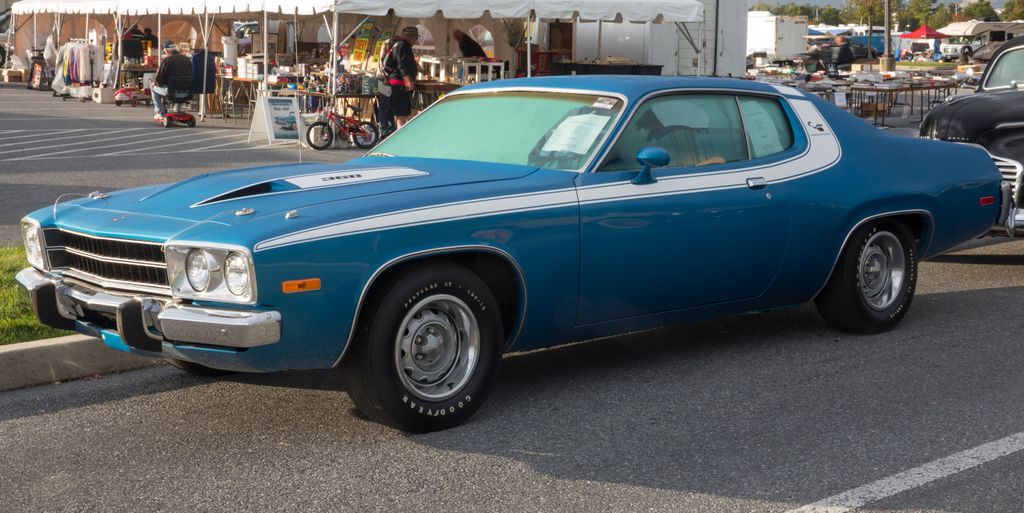
12. **1974 Plymouth Road Runner 360**By 1974, the celebrated Road Runner nameplate had evolved considerably, finding itself far removed from the unbridled, raucous origins of its 1968 birth. The shifting automotive landscape, influenced by fuel efficiency concerns and stricter regulations, necessitated a more pragmatic approach to performance. Yet, even in this transitional period, Plymouth steadfastly offered a performance-oriented 360-cubic-inch small-block option for the Road Runner, making a final, albeit milder, nod to its cherished muscle car legacy and striving to maintain its identity.
Amidst an era where big-block engines were rapidly becoming less common due to their thirst for fuel and the rising cost of insurance, the 360 small-block bravely stood in as Plymouth’s last significant gesture toward maintaining the Road Runner’s muscle car spirit. The car still proudly wore its iconic Road Runner cartoon logo, often accompanied by bold stripes and a distinctive front end design that artfully blended a sense of nostalgia with the practical considerations of the new decade.
The rarity of the 1974 Plymouth Road Runner 360 is largely a consequence of attrition. Many of these vehicles were subjected to the rigors of daily driving, raced, or heavily modified over the decades, often driven into the ground or transformed beyond immediate recognition. Consequently, spotting a genuine survivor in original, unmolested trim today is an increasingly rare and truly delightful treat for dedicated Mopar fans and collectors, representing a testament to a resilient performance machine in a challenging era.
Car Model Information: 2023 GMC Sierra 1500 Denali
Name: Plymouth Road Runner
Assembly: Detroit,Michigan
Manufacturer: Plymouth (automobile)
Class: Mid-size car
Production: 1968–1980
Related: unbulleted list
Layout: FR layout
Categories: 1970s cars, 1980s cars, All articles needing additional references, All articles with peacock terms, All articles with unsourced statements
Summary: The Plymouth Road Runner is a muscle car introduced by Chrysler in the United States for the 1968 model year and marketed under its Plymouth brand. Initially based on the Belvedere, the brand’s basic mid-size model, the Road Runner combined a powerful engine with a spartan trim level and a price that undercut increasingly upscale and expensive muscle cars such as the Pontiac GTO and Plymouth’s own GTX. It was initially a sales success.
The Road Runner was built in three generations on the mid-size B platform. Like most muscle cars, its performance and sales declined in the 1970s due to an increasing focus on fuel economy and the adoption of more stringent U.S. emission standards. The nameplate became to a trim package for the compact Plymouth Volaré for model year 1976—no longer offering any special performance capability—and was discontinued in 1980.
Get more information about: Plymouth Road Runner
Buying a high-performing used car >>>
Brand: Plymouth Model: Road Runner
Price: $61,999 Mileage: 17,877 mi.
Read more about: Untamed Beasts: The Most Outrageously Overpowered Muscle Cars That Pushed Street Limits
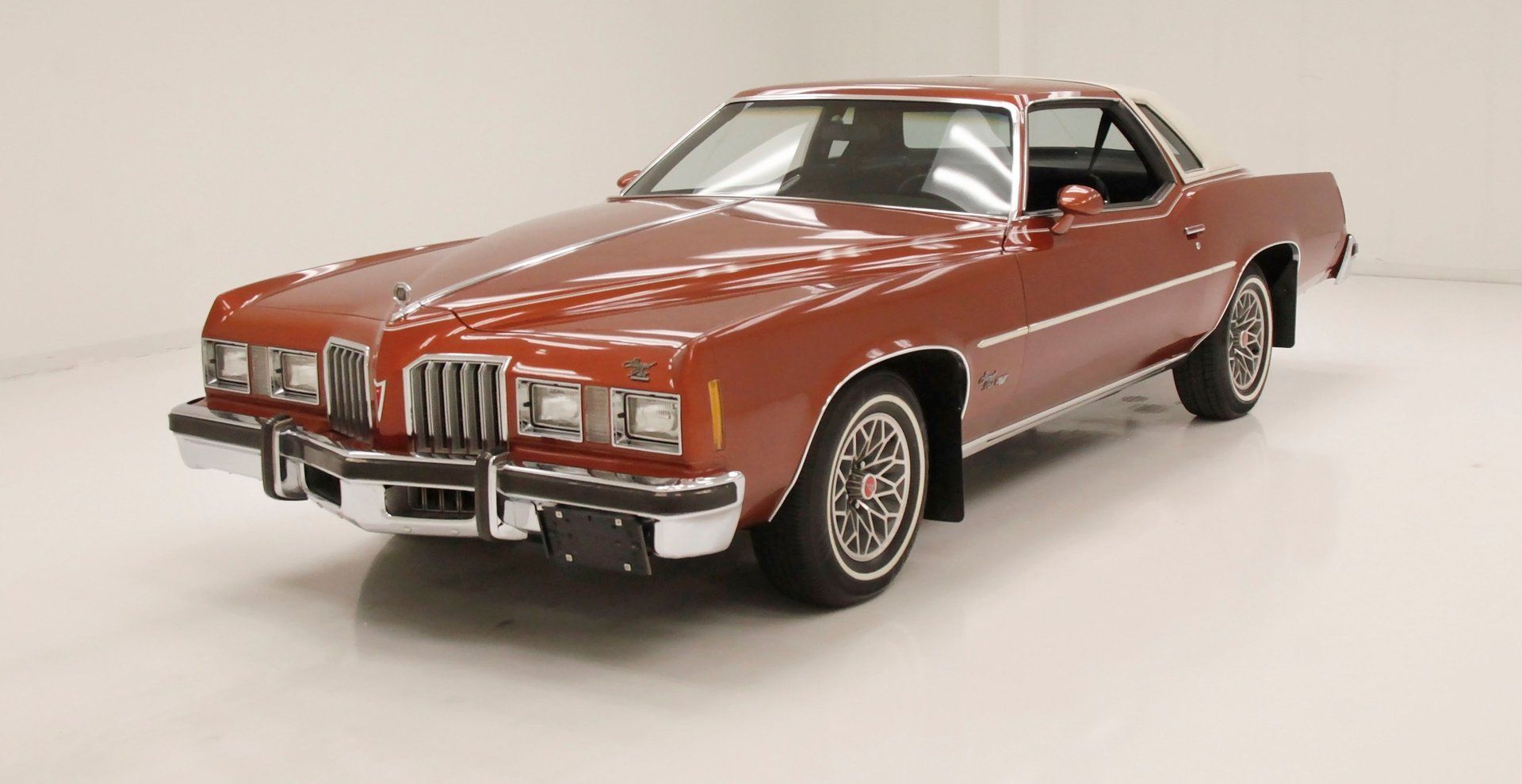
13. **1977 Pontiac Can Am**The 1977 Pontiac Can Am stands as a remarkable, one-year-only muscle car that has, over time, transitioned into a true hidden gem among automotive collectors. Conceived during an era when many considered American muscle to be largely dormant, the Can Am defied expectations. It featured a robust 400 cubic inch V8 engine that, for its time, delivered an impressive level of performance, injecting a much-needed dose of power into the Pontiac lineup and rekindling the flame for enthusiasts.
What truly amplified the Can Am’s mystique and collectibility was its exceedingly limited production run; only 1,377 units were ever produced. This scarcity immediately positioned it as an extremely rare vehicle, contributing significantly to its unique allure in the collector market. Visually, the Can Am was an unmistakable standout, characterized by its distinctive white body adorned with specific, eye-catching decals and a unique rear spoiler, ensuring it commanded attention at any car show or gathering.
While it may not enjoy the widespread recognition of more iconic muscle cars from the earlier part of the decade, the 1977 Pontiac Can Am’s compelling combination of distinctive style and potent performance has earned it a fiercely loyal and growing following. Its status as a unique, one-off offering from Pontiac makes it a particularly desirable acquisition for collectors who appreciate its individuality and its role in keeping the muscle car spirit alive during a challenging period for high-performance vehicles.
Car Model Information: 2023 GMC Sierra 1500 Denali
Categories: 1970s cars, Articles with short description, Mid-size cars, Pontiac vehicles, Short description matches Wikidata
Summary: The Pontiac Can Am is a midsize muscle car built by Pontiac and based on the Pontiac LeMans and the Pontiac Grand Am. The Can Am was a special edition option package and was only available in 1977. It was named for the Can Am racing series, continuing the race theme used for the Pontiac Grand Prix, LeMans and Trans Am.
Get more information about: Pontiac Can Am
Buying a high-performing used car >>>
Brand: Pontiac Model: Can Am
Price: $61,999 Mileage: 17,877 mi.
Read more about: From Roaring V8s to Silent Thunder: The Electrifying Evolution of American Muscle Cars
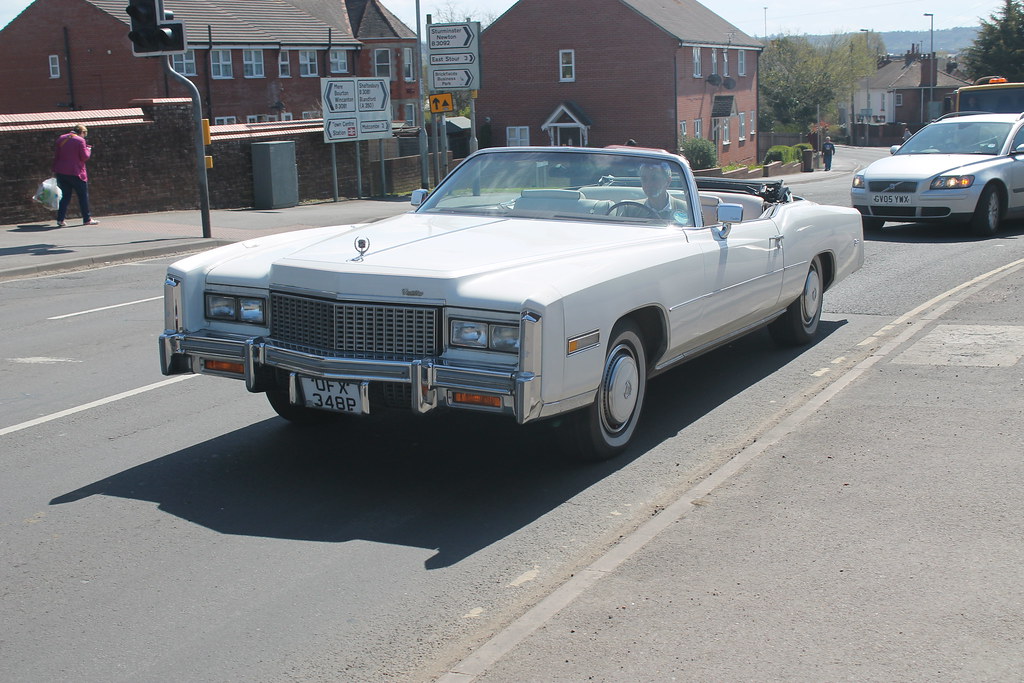
14. **1976 Cadillac Eldorado Convertible**The 1976 Cadillac Eldorado Convertible holds a notable place in American automotive history as the very last American convertible produced for several years before a resurgence in the 1980s. Its sheer immense size, coupled with a gargantuan 500-cubic-inch V8 engine, quickly earned it the affectionate yet telling nickname “land yacht.” This vehicle was a deliberate statement of luxury and presence, embodying an era where grand dimensions and effortless cruising were paramount design considerations for the American luxury car buyer.
The Eldorado Convertible was designed from the ground up to offer an unparalleled level of comfort and sophisticated style. Its interior was replete with an array of luxurious features, from plush seating to advanced amenities of the time, all contributing to an exceptionally smooth and quiet ride. Despite its eventual discontinuation as a convertible, the 1976 Eldorado remains a powerful and enduring symbol of American luxury and the unbridled opulence that defined the era, reflecting a consumer desire for unparalleled comfort and road presence.
Today, the 1976 Cadillac Eldorado Convertible is highly cherished by collectors for its unique and compelling combination of imposing size, authoritative power, and timeless elegance. Its significant place in automotive lore is firmly secured by its historical distinction as the final American convertible of its generation. For many, owning this car is akin to possessing a tangible piece of automotive history, a grand testament to an era of extravagant design and the pursuit of ultimate motoring comfort.
Car Model Information: 2023 GMC Sierra 1500 Denali
Caption: 1963 Cadillac Eldorado Convertible
Name: Cadillac Eldorado
Manufacturer: Cadillac
Production: 1952–2002
Layout: Front-engine, rear-wheel-drive layout
Aka: Cadillac Fleetwood Eldorado
Class: Personal luxury car
Successor: Cadillac CTS
Categories: 1960s cars, 1970s cars, 1980s cars, 1990s cars, 2000s cars
Summary: The Cadillac Eldorado is a luxury car manufactured and marketed by the Cadillac Motor Car Division of General Motors from 1952 until 2002, over twelve generations.
The Eldorado was at or near the top of the Cadillac product line. The original 1953 Eldorado convertible and the Eldorado Brougham models of 1957–1960 had distinct bodyshells and were the most expensive models offered by Cadillac during those years. The Eldorado was never less than second in price after the Cadillac Series 75 limousine until 1966. Beginning in 1967, the Eldorado retained its premium position in the Cadillac price structure, but was manufactured in high volumes on a unique, two-door personal luxury car platform.
The Eldorado carried the Fleetwood designation from 1965 through 1972, and was seen as a modern revival of the pre-war Cadillac V-12 and Cadillac V-16 roadsters and convertibles.
Get more information about: Cadillac Eldorado
Buying a high-performing used car >>>
Brand: Cadillac Model: Eldorado Convertible
Price: $61,999 Mileage: 17,877 mi.
Read more about: Cadillac’s Golden Age: Unpacking the Sumptuous Success of the De Ville, A True Icon of 1970s American Luxury
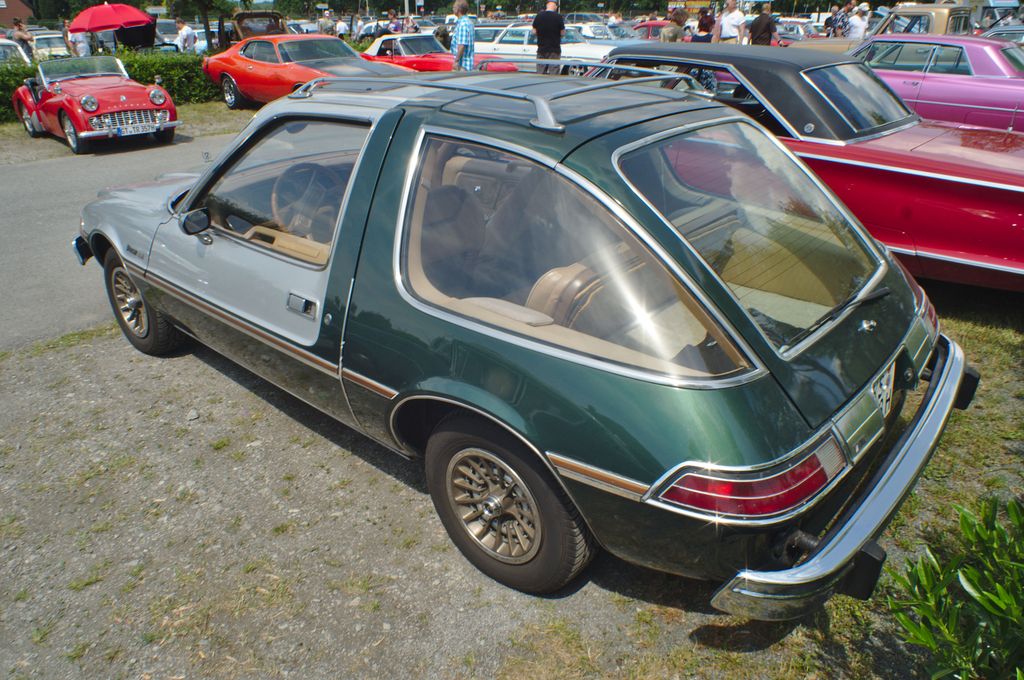
15. **1975 AMC Pacer**The 1975 AMC Pacer is often remembered, perhaps most vividly, for its undeniably unusual and groundbreaking design, which quickly earned it the memorable nickname “fishbowl on wheels.” With its expansive glass area and wide body on a compact footprint, it was a radical departure from conventional automotive aesthetics of the time. Despite its unconventional and often polarizing appearance, the Pacer successfully carved out a distinct niche audience that genuinely appreciated its remarkably spacious interior, especially for a car of its compact dimensions, and its refreshingly unique styling.
Beyond its divisive looks, the AMC Pacer found an enduring role in pop culture, significantly cementing its status as a quirky cult classic, particularly through its memorable appearances in films like “Wayne’s World.” This unexpected embrace by popular media further endeared it to a segment of enthusiasts who celebrated its distinctiveness rather than its adherence to traditional design norms, showcasing its unconventional appeal and enduring cultural relevance.
While the Pacer may not be regarded as a typical collector’s car in the traditional sense of high-performance muscle or luxury, its undeniable quirky charm and bold distinctiveness have rightfully earned it a permanent place in automotive history. Its legacy continues to be celebrated by a dedicated community of enthusiasts who are drawn to its unique proposition and who actively seek out vehicles that dare to be different, marking the Pacer as an intriguing anomaly that refused to be ignored.
Read more about: 19 Hilariously Bad Cars That Became Unforgettable Icons
The 1970s might not always carry the same untarnished mystique as the preceding muscle car golden age of the 1960s among purists, but it undeniably gave rise to a fascinating and pivotal period of transition in automotive history. These 15 rare American cars stand as a powerful testament to the fact that performance wasn’t entirely snuffed out by the advent of unleaded gasoline, catalytic converters, and escalating insurance premiums. Instead, it merely took on different forms, adapted, and in many cases, defiantly persevered. Each machine bears unique scars and triumphs from a decade where manufacturers wrestled with the complex challenge of balancing new compliance mandates with the enduring demands of driver enthusiasm. As we look back today, these vehicles shine brighter than ever, capturing a fleeting, yet incredibly significant, moment in American automotive history. Their values continue to climb, fueled by a compelling combination of scarcity, profound mechanical intrigue, and the romantic allure of what might have been had the horsepower wars never truly lost their steam. For dedicated collectors, discovering or painstakingly restoring one of these enduring machines is truly akin to catching lightning in a bottle—an unparalleled opportunity to preserve the final, exhilarating echoes of a time when big cubic inches and roaring exhaust notes still powerfully reigned supreme in American driveways. We hope you’ve enjoyed this roaring ride through the last vestiges of classic American muscle.



